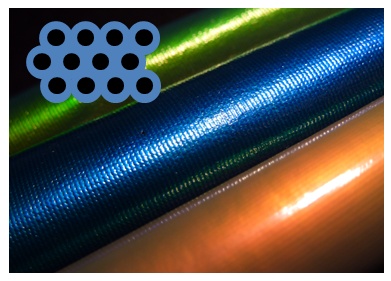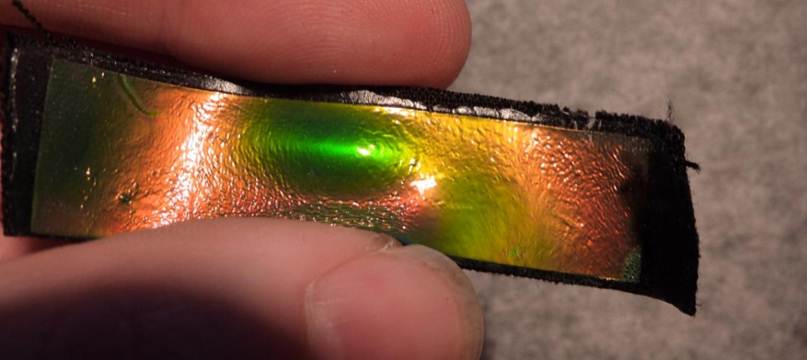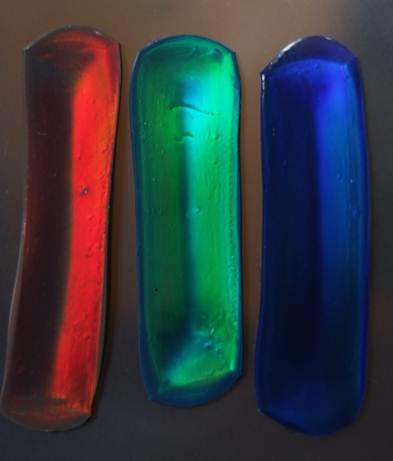Researchers at the Cavendish laboratories, (University of Cambridge, UK) in partnership with the DKI (Deutsches Kunststoff-Institut, Darmstadt, Germany) are working on industrially scalable structural colour materials for decorative, security and sensing applications. The Cambridge team lead by Prof. Jeremy Baumberg and Dr David Snoswell explain the technology behind these striking colour changing materials that are currently being developed for commercial release.
Natural gemstone opals have long been sought after for their bright saturated colours. Study of opals reveals that the colour is produced by their internal structure causing diffraction of visible light. The diffraction causes the enhanced reflection of particular wavelengths of light that gives rise to the very pure and intense colours so characteristic of opals. Colour generated by diffraction is often referred to as “Structural colour” and is found in a diverse variety of natural and synthetic objects including peacock feathers and the wings of tropical butterflies to dielectric mirrors and photonic crystals created in the laboratory. Commercially, synthetic structural colour materials are interesting because of their:
- Colour intensity: they can look ‘metallic’ although they usually contain no metal
- Colour play: the colour changes with viewing angle,
- Resistance to fade: they contain no UV sensitive dyes and
- Low toxicity: they can be made with benign ingredients like silica and common polymers
There are a number of methods to produce ordered structures with such precision. Gemstone opals achieve their structure by the regular stacking of perfectly round glass spheres. Polymer opals also consist of ordered spheres. Using clever chemistry similar to that used in the production of latex paints, a mass of nearly identical spheres for polymer opals are synthesised with a hard central core of crosslinked polystyrene, bonded to a soft outer shell of polyethylene acrylate that has the consistency of chewing gum.

When these spheres are subjected to shearing forces at elevated temperatures around 150 deg C, they self-assemble into an ordered 3D crystal that displays structural colour. The soft shells of adjacent particles deform and blend into a continuous matrix whilst the central cores are ordered in a regular pattern that diffracts light.

Structural colour materials with rubber-like properties have interesting characteristics. Bending, stretching or twisting polymer opal samples results in a striking colour change. A green sample becomes blue when stretched; a blue sample can turn green when compressed. Bending a green sample can change its colour to red or blue depending on the bending direction (see pic 6). Deforming the opals changes the spacing between the particle cores and hence affects the structural colour, however these changes are reversible allowing the original colour to be restored.
 The size of the particles controls the colour of the opals with small (171 nm), medium (191 nm) and large (266 nm) particles producing blue, green and red opals respectively (see below).
The size of the particles controls the colour of the opals with small (171 nm), medium (191 nm) and large (266 nm) particles producing blue, green and red opals respectively (see below).
The colour changing properties, together with the ability to mass produce the opals opens up an exciting range of applications. Colour changes that occur on bending naturally highlight edges if a sheet of polymer opal is bent around an object. Thin sheet samples can transmit coloured light which is complementary to the reflected colour, producing striking effects. Decorative applications naturally come to mind, however the unique properties are also difficult to reproduce suggesting security applications and brand protection. The colour changes evident on bending and stretching lend themselves to applications where an inexpensive visual indicator of tension or flex is required.
Below is a video demonstration of the blue-shift colour change that occurs on stretching.

